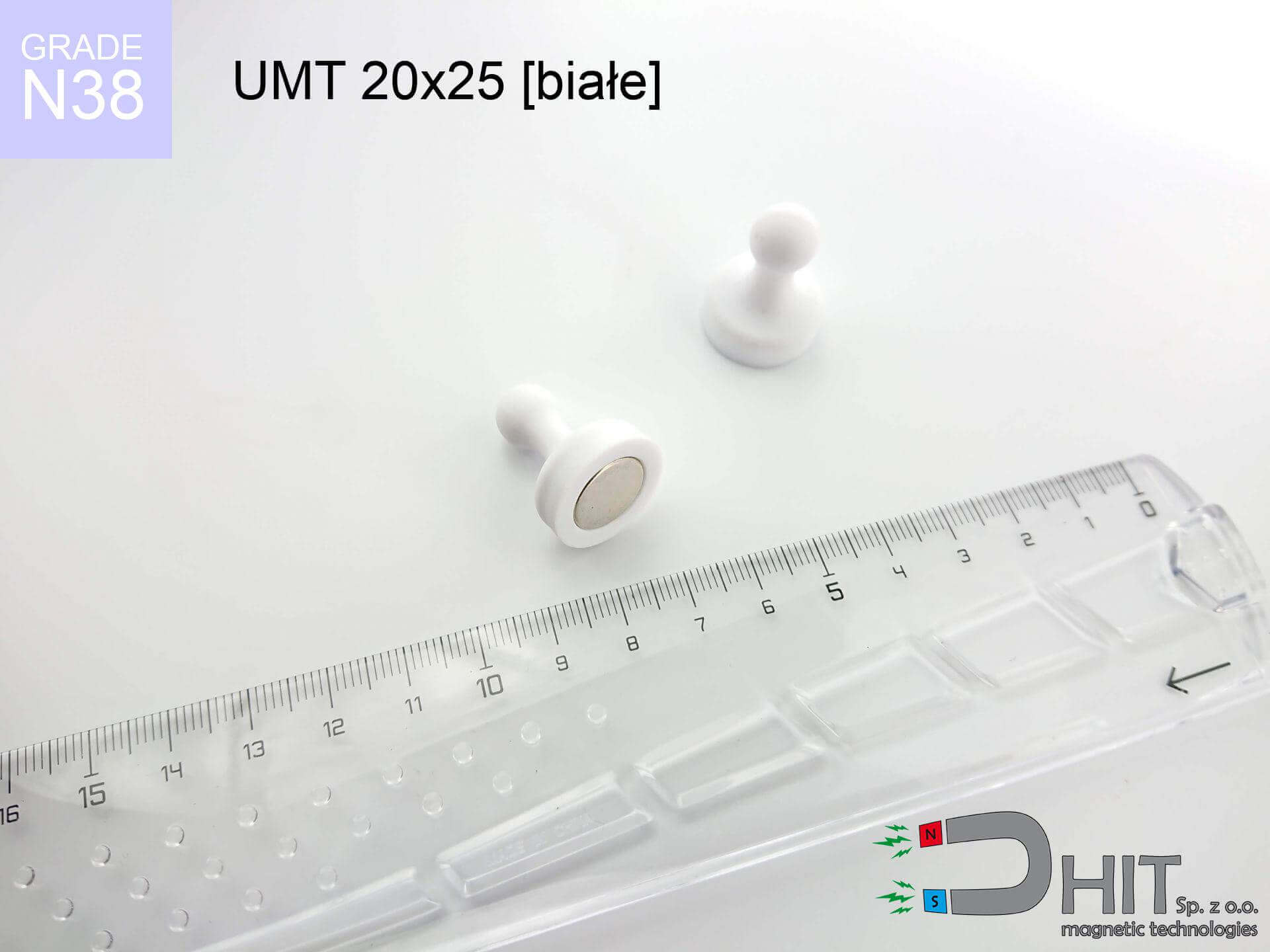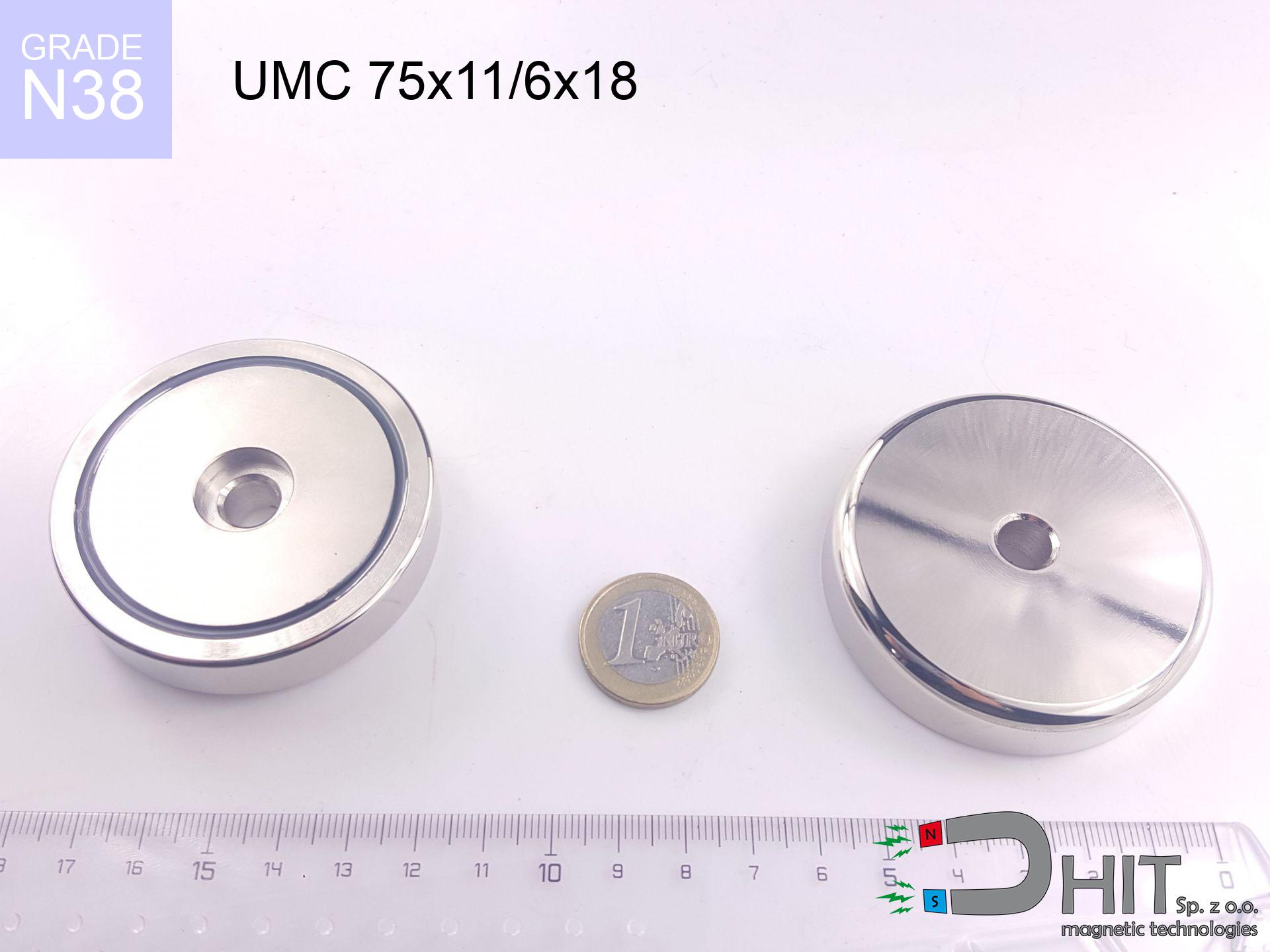MP 20x5x27 / N38 - ring magnet
ring magnet
Catalog no 030185
GTIN/EAN: 5906301812029
Diameter
20 mm [±0,1 mm]
internal diameter Ø
5 mm [±0,1 mm]
Height
27 mm [±0,1 mm]
Weight
59.64 g
Magnetization Direction
↑ axial
Load capacity
10.36 kg / 101.60 N
Magnetic Induction
581.04 mT / 5810 Gs
Coating
[NiCuNi] Nickel
33.00 ZŁ with VAT / pcs + price for transport
26.83 ZŁ net + 23% VAT / pcs
bulk discounts:
Need more?
Pick up the phone and ask
+48 22 499 98 98
alternatively let us know using
request form
the contact page.
Weight along with structure of magnets can be tested with our
force calculator.
Orders placed before 14:00 will be shipped the same business day.
Technical specification - MP 20x5x27 / N38 - ring magnet
Specification / characteristics - MP 20x5x27 / N38 - ring magnet
| properties | values |
|---|---|
| Cat. no. | 030185 |
| GTIN/EAN | 5906301812029 |
| Production/Distribution | Dhit sp. z o.o. |
| Country of origin | Poland / China / Germany |
| Customs code | 85059029 |
| Diameter | 20 mm [±0,1 mm] |
| internal diameter Ø | 5 mm [±0,1 mm] |
| Height | 27 mm [±0,1 mm] |
| Weight | 59.64 g |
| Magnetization Direction | ↑ axial |
| Load capacity ~ ? | 10.36 kg / 101.60 N |
| Magnetic Induction ~ ? | 581.04 mT / 5810 Gs |
| Coating | [NiCuNi] Nickel |
| Manufacturing Tolerance | ±0.1 mm |
Magnetic properties of material N38
| properties | values | units |
|---|---|---|
| remenance Br [min. - max.] ? | 12.2-12.6 | kGs |
| remenance Br [min. - max.] ? | 1220-1260 | mT |
| coercivity bHc ? | 10.8-11.5 | kOe |
| coercivity bHc ? | 860-915 | kA/m |
| actual internal force iHc | ≥ 12 | kOe |
| actual internal force iHc | ≥ 955 | kA/m |
| energy density [min. - max.] ? | 36-38 | BH max MGOe |
| energy density [min. - max.] ? | 287-303 | BH max KJ/m |
| max. temperature ? | ≤ 80 | °C |
Physical properties of sintered neodymium magnets Nd2Fe14B at 20°C
| properties | values | units |
|---|---|---|
| Vickers hardness | ≥550 | Hv |
| Density | ≥7.4 | g/cm3 |
| Curie Temperature TC | 312 - 380 | °C |
| Curie Temperature TF | 593 - 716 | °F |
| Specific resistance | 150 | μΩ⋅cm |
| Bending strength | 250 | MPa |
| Compressive strength | 1000~1100 | MPa |
| Thermal expansion parallel (∥) to orientation (M) | (3-4) x 10-6 | °C-1 |
| Thermal expansion perpendicular (⊥) to orientation (M) | -(1-3) x 10-6 | °C-1 |
| Young's modulus | 1.7 x 104 | kg/mm² |
Physical modeling of the product - data
Presented values are the outcome of a mathematical simulation. Values rely on algorithms for the material Nd2Fe14B. Actual conditions might slightly differ. Use these calculations as a supplementary guide when designing systems.
Table 1: Static pull force (pull vs gap) - power drop
MP 20x5x27 / N38
| Distance (mm) | Induction (Gauss) / mT | Pull Force (kg) | Risk Status |
|---|---|---|---|
| 0 mm |
5716 Gs
571.6 mT
|
10.36 kg / 10360.0 g
101.6 N
|
critical level |
| 1 mm |
5288 Gs
528.8 mT
|
8.87 kg / 8865.5 g
87.0 N
|
strong |
| 2 mm |
4861 Gs
486.1 mT
|
7.49 kg / 7491.0 g
73.5 N
|
strong |
| 3 mm |
4446 Gs
444.6 mT
|
6.27 kg / 6267.5 g
61.5 N
|
strong |
| 5 mm |
3677 Gs
367.7 mT
|
4.29 kg / 4285.9 g
42.0 N
|
strong |
| 10 mm |
2216 Gs
221.6 mT
|
1.56 kg / 1557.1 g
15.3 N
|
safe |
| 15 mm |
1354 Gs
135.4 mT
|
0.58 kg / 580.9 g
5.7 N
|
safe |
| 20 mm |
864 Gs
86.4 mT
|
0.24 kg / 236.9 g
2.3 N
|
safe |
| 30 mm |
405 Gs
40.5 mT
|
0.05 kg / 52.1 g
0.5 N
|
safe |
| 50 mm |
133 Gs
13.3 mT
|
0.01 kg / 5.6 g
0.1 N
|
safe |
Table 2: Slippage force (vertical surface)
MP 20x5x27 / N38
| Distance (mm) | Friction coefficient | Pull Force (kg) |
|---|---|---|
| 0 mm | Stal (~0.2) |
2.07 kg / 2072.0 g
20.3 N
|
| 1 mm | Stal (~0.2) |
1.77 kg / 1774.0 g
17.4 N
|
| 2 mm | Stal (~0.2) |
1.50 kg / 1498.0 g
14.7 N
|
| 3 mm | Stal (~0.2) |
1.25 kg / 1254.0 g
12.3 N
|
| 5 mm | Stal (~0.2) |
0.86 kg / 858.0 g
8.4 N
|
| 10 mm | Stal (~0.2) |
0.31 kg / 312.0 g
3.1 N
|
| 15 mm | Stal (~0.2) |
0.12 kg / 116.0 g
1.1 N
|
| 20 mm | Stal (~0.2) |
0.05 kg / 48.0 g
0.5 N
|
| 30 mm | Stal (~0.2) |
0.01 kg / 10.0 g
0.1 N
|
| 50 mm | Stal (~0.2) |
0.00 kg / 2.0 g
0.0 N
|
Table 3: Wall mounting (sliding) - vertical pull
MP 20x5x27 / N38
| Surface type | Friction coefficient / % Mocy | Max load (kg) |
|---|---|---|
| Raw steel |
µ = 0.3
30% Nominalnej Siły
|
3.11 kg / 3108.0 g
30.5 N
|
| Painted steel (standard) |
µ = 0.2
20% Nominalnej Siły
|
2.07 kg / 2072.0 g
20.3 N
|
| Oily/slippery steel |
µ = 0.1
10% Nominalnej Siły
|
1.04 kg / 1036.0 g
10.2 N
|
| Magnet with anti-slip rubber |
µ = 0.5
50% Nominalnej Siły
|
5.18 kg / 5180.0 g
50.8 N
|
Table 4: Material efficiency (saturation) - sheet metal selection
MP 20x5x27 / N38
| Steel thickness (mm) | % power | Real pull force (kg) |
|---|---|---|
| 0.5 mm |
|
0.52 kg / 518.0 g
5.1 N
|
| 1 mm |
|
1.30 kg / 1295.0 g
12.7 N
|
| 2 mm |
|
2.59 kg / 2590.0 g
25.4 N
|
| 5 mm |
|
6.48 kg / 6475.0 g
63.5 N
|
| 10 mm |
|
10.36 kg / 10360.0 g
101.6 N
|
Table 5: Thermal resistance (material behavior) - power drop
MP 20x5x27 / N38
| Ambient temp. (°C) | Power loss | Remaining pull | Status |
|---|---|---|---|
| 20 °C | 0.0% |
10.36 kg / 10360.0 g
101.6 N
|
OK |
| 40 °C | -2.2% |
10.13 kg / 10132.1 g
99.4 N
|
OK |
| 60 °C | -4.4% |
9.90 kg / 9904.2 g
97.2 N
|
OK |
| 80 °C | -6.6% |
9.68 kg / 9676.2 g
94.9 N
|
|
| 100 °C | -28.8% |
7.38 kg / 7376.3 g
72.4 N
|
Table 6: Magnet-Magnet interaction (repulsion) - field collision
MP 20x5x27 / N38
| Gap (mm) | Attraction (kg) (N-S) | Repulsion (kg) (N-N) |
|---|---|---|
| 0 mm |
44.24 kg / 44243 g
434.0 N
6 064 Gs
|
N/A |
| 1 mm |
41.02 kg / 41018 g
402.4 N
11 008 Gs
|
36.92 kg / 36917 g
362.2 N
~0 Gs
|
| 2 mm |
37.86 kg / 37860 g
371.4 N
10 576 Gs
|
34.07 kg / 34074 g
334.3 N
~0 Gs
|
| 3 mm |
34.85 kg / 34848 g
341.9 N
10 146 Gs
|
31.36 kg / 31363 g
307.7 N
~0 Gs
|
| 5 mm |
29.30 kg / 29295 g
287.4 N
9 303 Gs
|
26.37 kg / 26366 g
258.6 N
~0 Gs
|
| 10 mm |
18.30 kg / 18303 g
179.6 N
7 353 Gs
|
16.47 kg / 16473 g
161.6 N
~0 Gs
|
| 20 mm |
6.65 kg / 6650 g
65.2 N
4 432 Gs
|
5.98 kg / 5985 g
58.7 N
~0 Gs
|
| 50 mm |
0.45 kg / 455 g
4.5 N
1 159 Gs
|
0.41 kg / 409 g
4.0 N
~0 Gs
|
Table 7: Hazards (electronics) - warnings
MP 20x5x27 / N38
| Object / Device | Limit (Gauss) / mT | Safe distance |
|---|---|---|
| Pacemaker | 5 Gs (0.5 mT) | 18.0 cm |
| Hearing aid | 10 Gs (1.0 mT) | 14.0 cm |
| Timepiece | 20 Gs (2.0 mT) | 11.0 cm |
| Phone / Smartphone | 40 Gs (4.0 mT) | 8.5 cm |
| Remote | 50 Gs (5.0 mT) | 7.5 cm |
| Payment card | 400 Gs (40.0 mT) | 3.5 cm |
| HDD hard drive | 600 Gs (60.0 mT) | 2.5 cm |
Table 8: Collisions (cracking risk) - warning
MP 20x5x27 / N38
| Start from (mm) | Speed (km/h) | Energy (J) | Predicted outcome |
|---|---|---|---|
| 10 mm |
14.49 km/h
(4.02 m/s)
|
0.48 J | |
| 30 mm |
23.09 km/h
(6.42 m/s)
|
1.23 J | |
| 50 mm |
29.73 km/h
(8.26 m/s)
|
2.03 J | |
| 100 mm |
42.03 km/h
(11.68 m/s)
|
4.07 J |
Table 9: Anti-corrosion coating durability
MP 20x5x27 / N38
| Technical parameter | Value / Description |
|---|---|
| Coating type | [NiCuNi] Nickel |
| Layer structure | Nickel - Copper - Nickel |
| Layer thickness | 10-20 µm |
| Salt spray test (SST) ? | 24 h |
| Recommended environment | Indoors only (dry) |
Table 10: Electrical data (Pc)
MP 20x5x27 / N38
| Parameter | Value | SI Unit / Description |
|---|---|---|
| Magnetic Flux | 14 314 Mx | 143.1 µWb |
| Pc Coefficient | 1.16 | High (Stable) |
Table 11: Underwater work (magnet fishing)
MP 20x5x27 / N38
| Environment | Effective steel pull | Effect |
|---|---|---|
| Air (land) | 10.36 kg | Standard |
| Water (riverbed) |
11.86 kg
(+1.50 kg Buoyancy gain)
|
+14.5% |
1. Vertical hold
*Caution: On a vertical wall, the magnet retains only ~20% of its perpendicular strength.
2. Plate thickness effect
*Thin metal sheet (e.g. computer case) drastically limits the holding force.
3. Power loss vs temp
*For N38 material, the max working temp is 80°C.
4. Demagnetization curve and operating point (B-H)
chart generated for the permeance coefficient Pc (Permeance Coefficient) = 1.16
The chart above illustrates the magnetic characteristics of the material within the second quadrant of the hysteresis loop. The solid red line represents the demagnetization curve (material potential), while the dashed blue line is the load line based on the magnet's geometry. The Pc (Permeance Coefficient), also known as the load line slope, is a dimensionless value that describes the relationship between the magnet's shape and its magnetic stability. The intersection of these two lines (the black dot) is the operating point — it determines the actual magnetic flux density generated by the magnet in this specific configuration. A higher Pc value means the magnet is more 'slender' (tall relative to its area), resulting in a higher operating point and better resistance to irreversible demagnetization caused by external fields or temperature. A value of 0.42 is relatively low (typical for flat magnets), meaning the operating point is closer to the 'knee' of the curve — caution is advised when operating at temperatures near the maximum limit to avoid strength loss.
Chemical composition
| iron (Fe) | 64% – 68% |
| neodymium (Nd) | 29% – 32% |
| boron (B) | 1.1% – 1.2% |
| dysprosium (Dy) | 0.5% – 2.0% |
| coating (Ni-Cu-Ni) | < 0.05% |
Sustainability
| recyclability (EoL) | 100% |
| recycled raw materials | ~10% (pre-cons) |
| carbon footprint | low / zredukowany |
| waste code (EWC) | 16 02 16 |
Other products
Pros as well as cons of neodymium magnets.
Advantages
- They retain full power for nearly 10 years – the drop is just ~1% (in theory),
- They possess excellent resistance to magnetic field loss as a result of external fields,
- The use of an elegant finish of noble metals (nickel, gold, silver) causes the element to look better,
- The surface of neodymium magnets generates a strong magnetic field – this is one of their assets,
- Through (appropriate) combination of ingredients, they can achieve high thermal resistance, enabling operation at temperatures reaching 230°C and above...
- Considering the possibility of free shaping and adaptation to specialized projects, neodymium magnets can be created in a wide range of shapes and sizes, which increases their versatility,
- Key role in innovative solutions – they serve a role in mass storage devices, brushless drives, advanced medical instruments, as well as multitasking production systems.
- Compactness – despite small sizes they offer powerful magnetic field, making them ideal for precision applications
Limitations
- They are prone to damage upon too strong impacts. To avoid cracks, it is worth securing magnets in special housings. Such protection not only shields the magnet but also improves its resistance to damage
- We warn that neodymium magnets can lose their strength at high temperatures. To prevent this, we recommend our specialized [AH] magnets, which work effectively even at 230°C.
- They rust in a humid environment. For use outdoors we recommend using waterproof magnets e.g. in rubber, plastic
- Due to limitations in realizing threads and complex forms in magnets, we propose using casing - magnetic mount.
- Possible danger to health – tiny shards of magnets pose a threat, when accidentally swallowed, which becomes key in the context of child safety. It is also worth noting that small components of these devices are able to complicate diagnosis medical after entering the body.
- Higher cost of purchase is a significant factor to consider compared to ceramic magnets, especially in budget applications
Holding force characteristics
Maximum holding power of the magnet – what contributes to it?
- using a base made of high-permeability steel, acting as a circuit closing element
- with a cross-section no less than 10 mm
- characterized by even structure
- with total lack of distance (without coatings)
- during pulling in a direction vertical to the plane
- at room temperature
Determinants of practical lifting force of a magnet
- Space between magnet and steel – even a fraction of a millimeter of separation (caused e.g. by varnish or unevenness) significantly weakens the pulling force, often by half at just 0.5 mm.
- Angle of force application – highest force is available only during perpendicular pulling. The resistance to sliding of the magnet along the surface is typically several times smaller (approx. 1/5 of the lifting capacity).
- Steel thickness – too thin plate does not accept the full field, causing part of the flux to be wasted into the air.
- Steel type – low-carbon steel attracts best. Higher carbon content reduce magnetic properties and lifting capacity.
- Surface structure – the smoother and more polished the surface, the larger the contact zone and stronger the hold. Unevenness creates an air distance.
- Thermal environment – heating the magnet results in weakening of induction. It is worth remembering the maximum operating temperature for a given model.
Lifting capacity testing was performed on plates with a smooth surface of optimal thickness, under a perpendicular pulling force, however under attempts to slide the magnet the load capacity is reduced by as much as fivefold. Additionally, even a slight gap between the magnet’s surface and the plate lowers the lifting capacity.
Precautions when working with NdFeB magnets
Do not underestimate power
Exercise caution. Neodymium magnets act from a long distance and connect with huge force, often quicker than you can react.
Choking Hazard
Neodymium magnets are not suitable for play. Swallowing multiple magnets can lead to them connecting inside the digestive tract, which constitutes a direct threat to life and requires immediate surgery.
Metal Allergy
Studies show that nickel (standard magnet coating) is a common allergen. If your skin reacts to metals, refrain from touching magnets with bare hands or choose encased magnets.
Magnetic media
Do not bring magnets near a purse, laptop, or TV. The magnetism can irreversibly ruin these devices and wipe information from cards.
Keep away from electronics
Note: rare earth magnets produce a field that confuses sensitive sensors. Keep a safe distance from your phone, tablet, and navigation systems.
Crushing risk
Pinching hazard: The attraction force is so immense that it can result in blood blisters, crushing, and even bone fractures. Protective gloves are recommended.
Machining danger
Mechanical processing of NdFeB material poses a fire hazard. Neodymium dust oxidizes rapidly with oxygen and is difficult to extinguish.
Protective goggles
Despite metallic appearance, the material is delicate and not impact-resistant. Avoid impacts, as the magnet may crumble into sharp, dangerous pieces.
Warning for heart patients
Individuals with a heart stimulator must maintain an safe separation from magnets. The magnetic field can stop the operation of the implant.
Demagnetization risk
Do not overheat. Neodymium magnets are sensitive to heat. If you require operation above 80°C, look for HT versions (H, SH, UH).


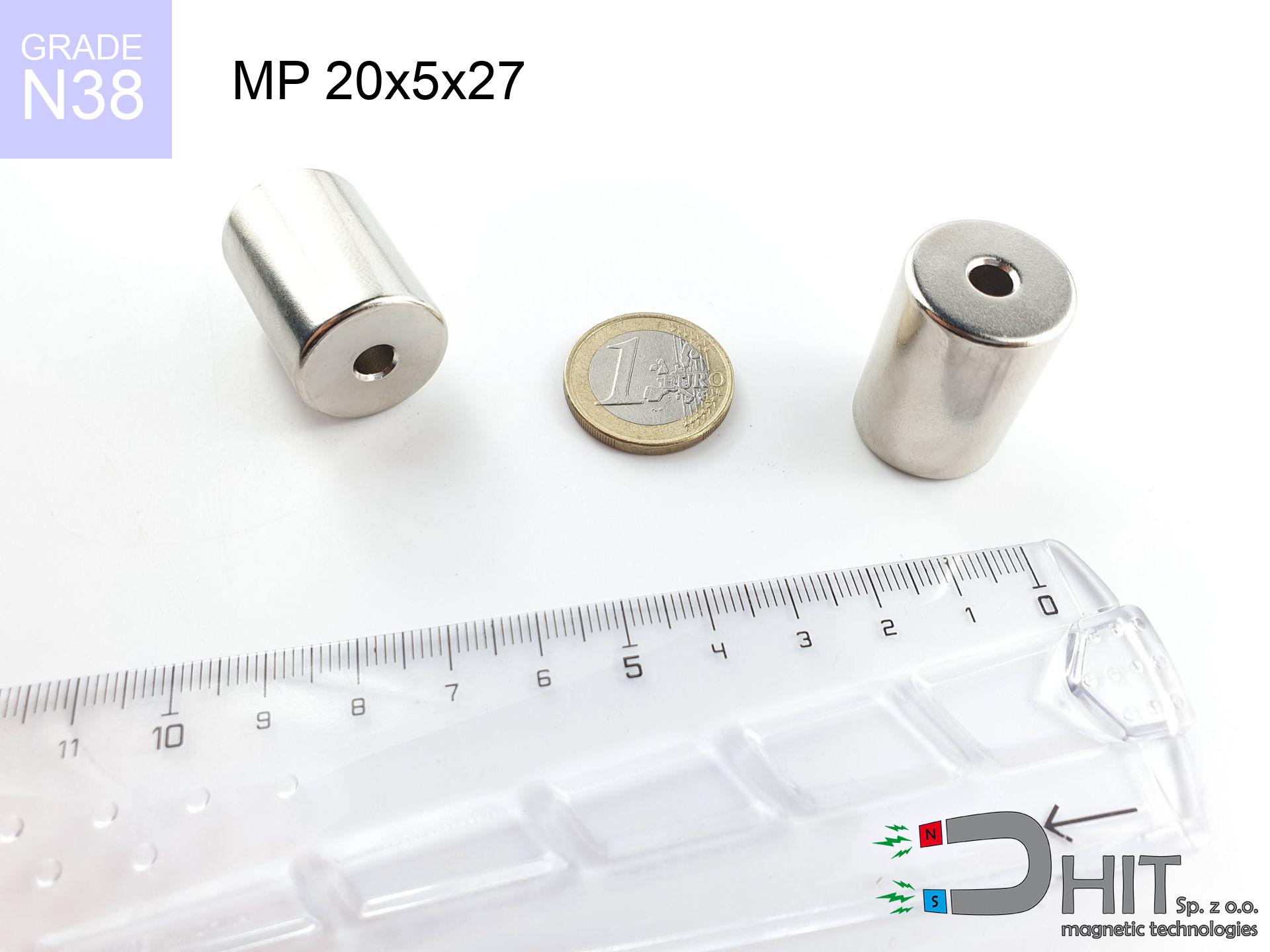
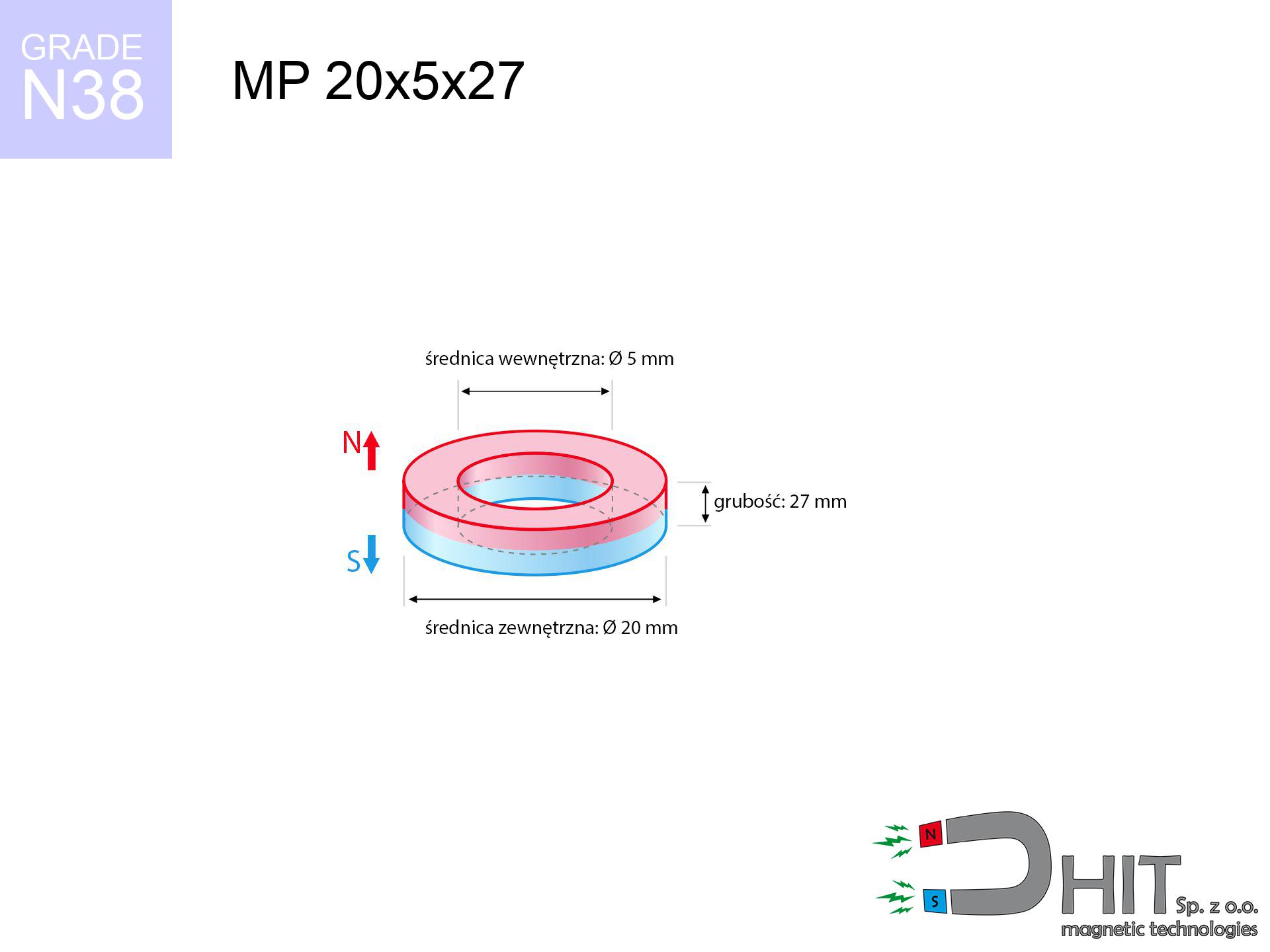
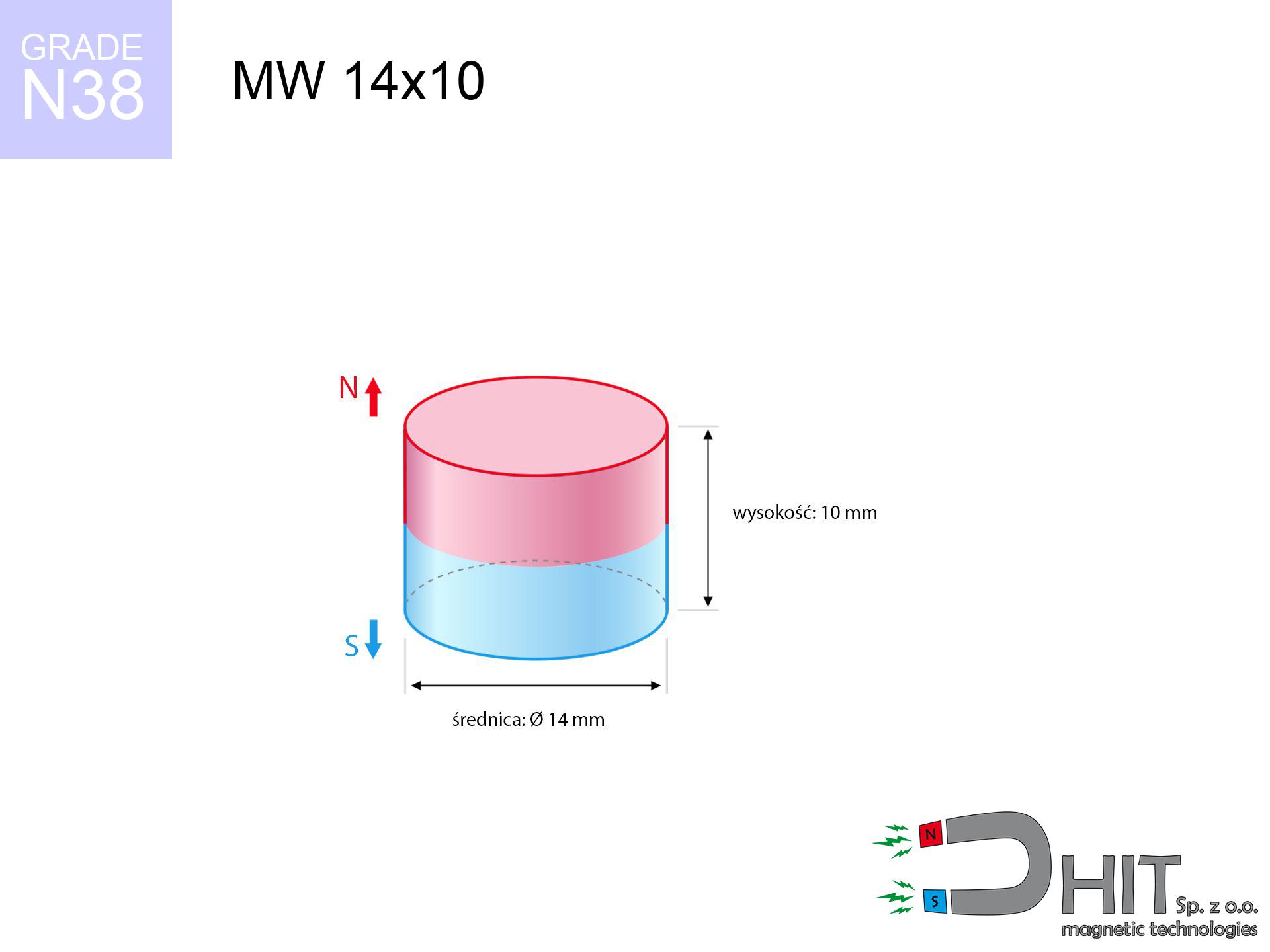
![UMP 67x28 [M8+M10] GW F120 Lina / N38 - search holder UMP 67x28 [M8+M10] GW F120 Lina / N38 - search holder](https://cdn3.dhit.pl/graphics/products/ump-67x28-m8+m10-gw-f-120+-lina-xiw.jpg)
